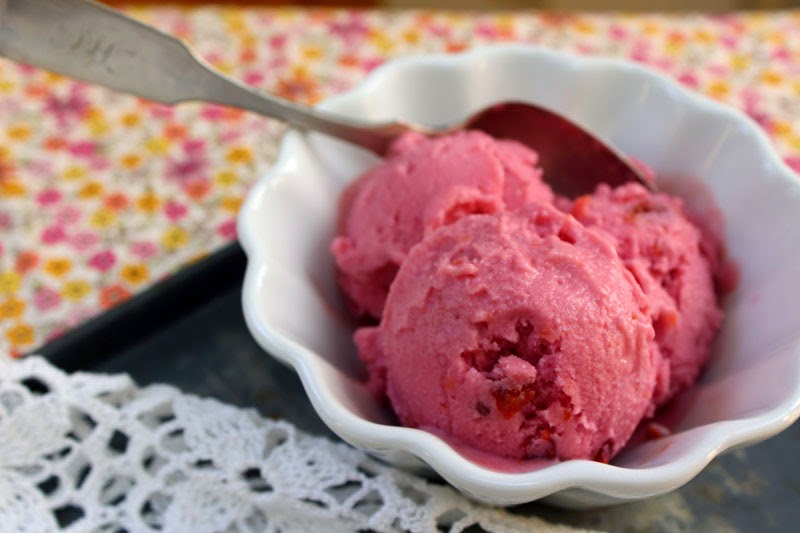Recently I purchased an ice cream maker. I have been so close to purchasing one for the last few years, but have always stopped myself until now. Then last month I found myself standing in front of a display of ice cream makers. It was too frivolous a purchase. I started to leave, but then remember a 20% off coupon in my wallet. I took that as a sign. The universe wanted me to be an owner of an ice cream maker. I loaded it into my car, and immediately felt guilty for purchasing such a large nonessential kitchen tool. I left it in my car for a week before I finally decided I would keep it. As I brought it into the house my husband took one look at it and commented on the dangers of having too much ice cream in the house. "Oh no," I said, "we can make frozen yogurt. It is much healthier and easier," and hoped this was really true. Well luckily it is true. Picture me wiping my worried, sweaty brow and heaving a big sigh of relief, cause I really wanted to love my new toy.
In Just Dessert by Alice Medrich she says "...ice cream making at home is not an exact science...there are so many variables: machines differ, fruit varies in sweetness and ripeness, and every cook's palate is different. This very inexactitude is an invitation." I have certainly found this to be true and suggest you use this recipe as an "invitation" to play around with your ingredients.
The library has great eBooks on the basics of ice cream and frozen yogurt. These can be found in our Enki collection of eBooks.
Making Ice Cream and Frozen Yogurt by Maggie Oster has a straightforward basic vanilla yogurt recipe that you can get creative with and experiment with all sort of fruits and flavor additions.
3-4 cups plain yogurt of your choice: lowfat, 2%, whole, or Greek
1/4 to 1/2 cup honey or other sweetener to taste ( I like to use agave)
1 tablespoon vanilla
Variations: 2 cups of pureed fruit (I added fresh strawberries for my first batch)
Combine all ingredients in a blender, mixer, or food processor until smooth. Chill mixture and then follow the procedure for your maker. (Or see below for non-machine method) Initially the frozen yogurt will be very soft straight out from the ice cream maker. To firm the mixture store in freezer for 30 minutes to 1 hour.
Next I tried roasted apricot frozen yogurt, followed by a roasted plum and blackberry frozen yogurt. Incredible! Roasting most fruit intensifies the flavor. I just pitted the fruit and sprinkled a little granulated sugar on the apricots and plums and put them in the oven at 375 degrees until they started to soften and caramelize a bit on the edges. Then I removed the skin from the apricots (but not the plums) pureed it and added it to the above recipe with a little splash of buttermilk.
To make frozen yogurt without a ice cream maker:
Prepare the mixture and pour into a shallow tray such as a cake pan. Place tray in the freezer for 30 minutes to 1 hour or until mixture is mush but not yet solid. Scrape mixture into a chilled bowl and beat with an electric mixer (or food processor) until mixture is smooth. Quickly return the mixture to the tray and the freezer. When almost solid repeat the beating process. Return to the tray and cover mixture with plastic wrap to prevent ice crystals from forming on top. Place tray in the freezer until firm, but still scoopable.
 |
| Roasted plum and blackberry frozen yogurt |
Everything Ice Cream, Gelato and Frozen Desserts Cookbook by Susan Whetzel


















































